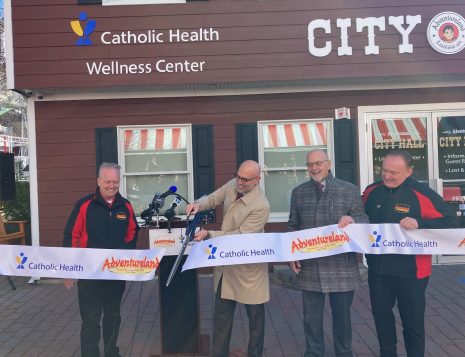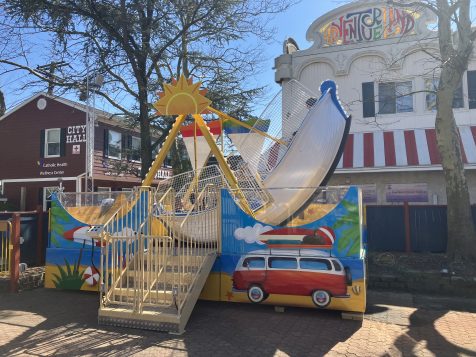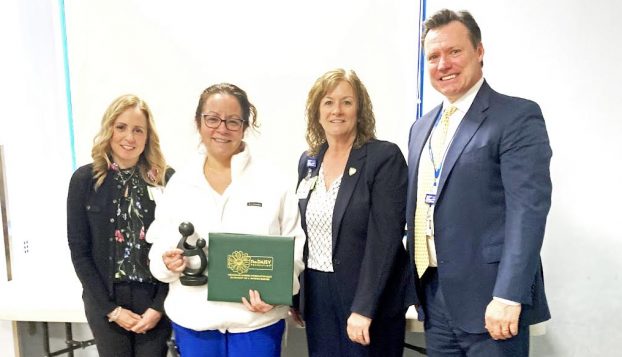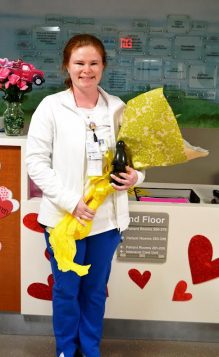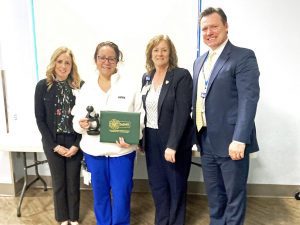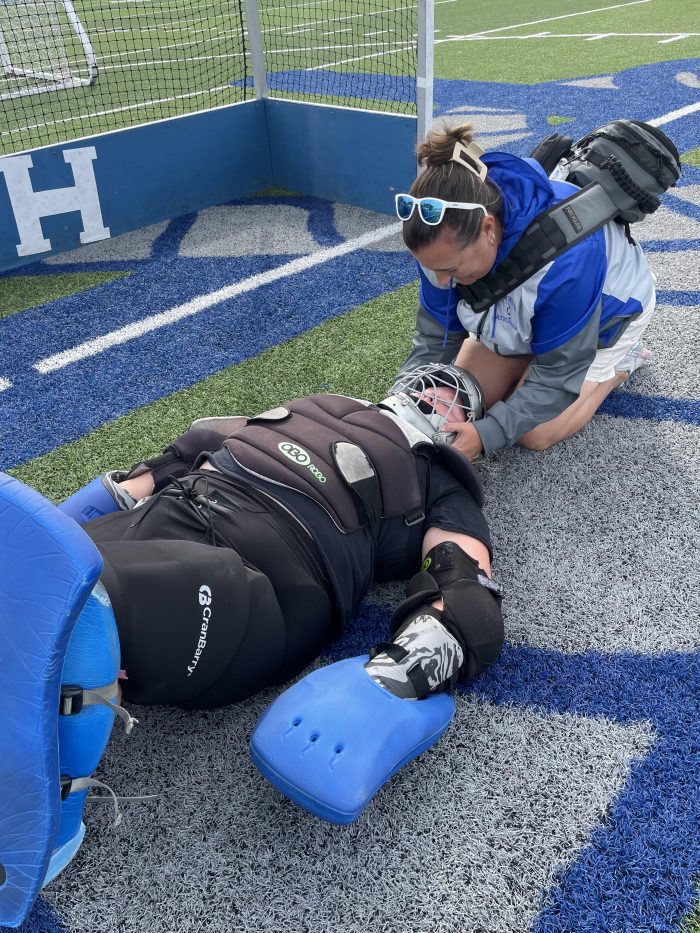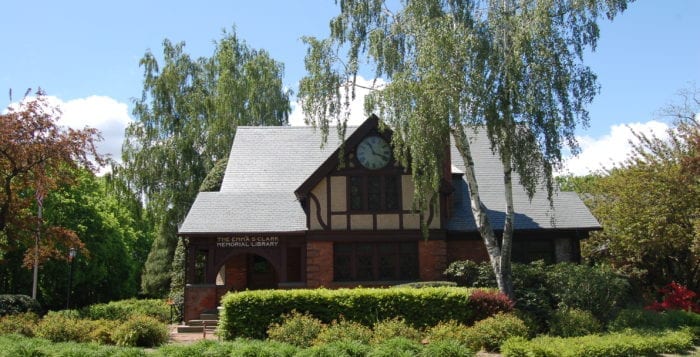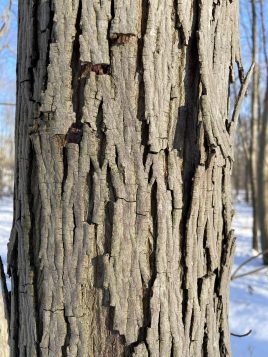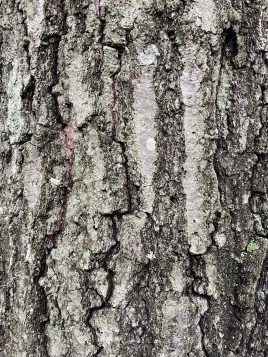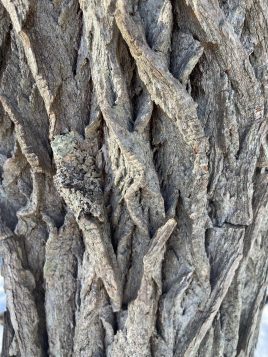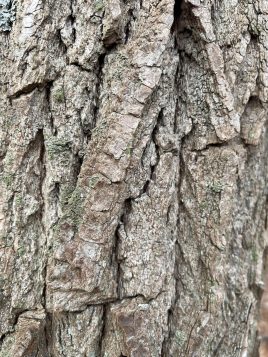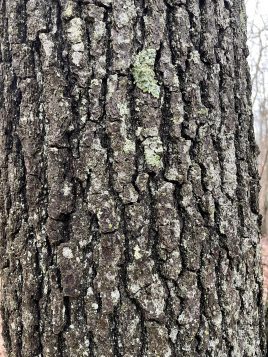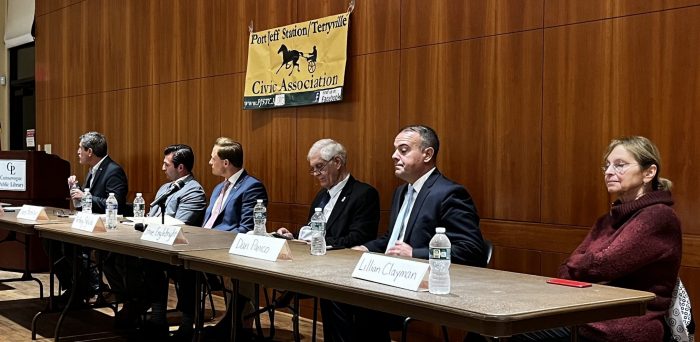Partnership with Catholic Health; New Rides: ‘Moon Chaser,’ ‘Jr. Pirate Ship,’ and ‘Wave Twister’ Announced
Adventureland in Farmingdale has announced the details of its multi-year, five-phase $10 million redevelopment plan of Long Island’s most popular amusement park, as well as a new partnership with Catholic Health. This marks one of the biggest investment projects in the park’s 62-year history since the installation of the ride called ‘Turbulence’ in 2015, which cost $5 million. The announcement was made at a press conference on March 19.
“We saw an opportunity to improve and enhance the guest experience,” said Caitlin DiSclafani, Park Manager of Adventureland. “These investments add value to the park and to the guests’ experience. We’re excited to leave a lasting legacy in the park for generations to come.”
The most visible and immediate change is the addition of two new rides for the upcoming 2024 season, which include the ‘Jr. Pirate Ship Ride’ and ‘Moon Chaser.’ The second phase involves the addition of a first-of-its-kind custom-made ride called ‘Wave Twister,’ which is expected to open in time for the spring 2025 season. There are at least two more planned rides that are to be added over the next three phases. These will be the first new rides since the addition of the ‘FireBall’ in 2022, which was a $2 million investment.
“Our family is very excited to bring the dream of redeveloping Pirate’s Cove into reality with the groundbreaking of Legacy Corner,” said Steve Gentile, President of Adventureland. “We are thrilled to kick off this 5-year project with Moon Chaser, which I’m sure will be an amazing addition to Adventureland and fan favorite for the people of Long Island. To be able to have the best that our amusement industry has to offer right here in Farmingdale – the heart of Long Island- is something very special. It is a privilege that we do not take for granted!”
Adventureland estimates that by the end of the fifth phase, there will be a 10% growth in employment to support the new ‘Legacy Corner’ section, which is expected to be completed in 2028.
Catholic Health Partnership
Catholic Health is sponsoring the main entrance and the City Hall Building, which has now been renamed the Catholic Health Wellness Center. This area is home to ‘Guest Relations,’ ‘First Aid,’ and the ‘Lost and Found.’ Another addition is a blue line throughout Adventureland that will direct guests from anywhere in the park to the Catholic Health Wellness Center.
“Catholic Health is pleased to serve as lead sponsor for Adventureland, Long Island’s favorite amusement park,” said Dr. Patrick O’Shaughnessy, president and CEO of Catholic Health. “With deep roots in Long Island and an ongoing history of partnering with the communities it serves, we’re thrilled to do our part to ensure that the communities of Long Island will always have opportunities to make lasting memories in a family-friendly environment. Adventureland is all about bringing families and friends together, and so is Catholic Health.”
Catholic Health will also have a presence in the park during family-friendly events like the ‘Egg Scramble’ and ‘Pumpkin Park’. Catholic Health will also feature a variety of health-focused educational programs for park guests throughout the season.
“Adventureland and Catholic Health both support the health, wellness, and safety of Long Island families, so we are very excited to announce a partnership between these two Long Island institutions,” said DiSclafani.
Legacy Corner
A large part of the investment will be the creation of the ‘Legacy Corner,’ which will be on the front southeast side of the park about a little over an acre in size. In addition to at least four new rides, brand-new concession stands, restrooms, and other amenities will be constructed. Annually, Adventureland hires over 650 part-time employees. It’s estimated that the increase in employment to service these new areas will lead to a 10% increase in park employment by the end of the fifth phase. The full five-phase project is expected to be completed by 2028.
Retired Rides
In the weeks leading up to its 2024 season opening, Adventureland announced the retirement of the ‘Log Flume,’ ‘Pirate Ship’ ride and ‘Spinning Cars’ to make way for new rides.
The ‘Pirate Ship’ ride was installed in 1987, which makes it over 35 years old. Adventureland officials say it was about time to replace the aging rides.
“With older rides—they need more maintenance and become difficult to repair over time. And, also—finding replacement parts becomes increasingly difficult as the parts are no longer being made,” said DiSclafani.
The ‘Log Flume’ was replaced for a few reasons, one of which was that it took up a significant amount of space—about 10%—of the entire park. It also had limited seasonal use from May through September. In contrast, the new rides will be utilized all season long, from March through early November.
The ‘Spinning Cars’ were retired to make way for the ‘Jr. Pirate Ship’ ride. The ‘Antique Cars’ are expected to be retired during the third phase of the plan.
New Rides
The ‘Jr. Pirate Ship’ ride is geared towards—but not limited to—children who are from 5-to-8 years old. (They must be about 36″ tall to ride with an adult and 47″ tall to ride alone.) This ride is located by ‘Kiddieland’ near the arcade. It is similar to the larger scale ‘Pirate Ship’ ride which was recently removed to make room for the ‘Moon Chaser.’
The ‘Moon Chaser’ is a 45′ tall galaxy-themed thrill ride which spins, twists, dips, and inverts riders. This ride is unique because it is currently the only one in the park that goes upside down. It is similar to the size and footprint of the ‘Pirate Ship’ ride it is replacing. This ride is geared towards children who are 11 years old or older. (Anyone who wishes to ride this must be at least 55″ tall.) This ride seats 28 people at a time.
The Moon Chaser is considered a flat ride—which means it depends on power—and riders will experience immediate thrills as soon as the ride starts.
The second phase will introduce the new ride— ‘Wave Twister.’ This is a first-of-its-kind ride that was custom built for Adventureland. This newly-created ride that will make its debut in the United States. The track is custom built in a boomerang shape to fit into the corner of the ‘Legacy Corner,’ which will maximize the available space in that section. It’s estimated that one or two more rides can fit in that section, which was formerly referred to as ‘Adventure Falls.’ The plan is to expand more rides within the existing footprint of the park.
The ‘Wave Twister’ is a family ride. It was made in Switzerland by RES Rides—the same company that built the ‘FireBall’ ride. Similar to ‘Wave Twister,’ this ride has a boomerang shape to simulate the motion and feel of riding on ocean waves. It will spin and travel over a track and reach heights of up to 60 feet at its peak. Although it is a dry ride, it will feature water elements in the forms of fountains and mists. It features two gondolas in a figure-eight shape and can fit 20 riders per cycle. Riders must be 36″ tall (height of the average 4-year-old) to ride with adults, and 48″ tall (height of the average 8-year-old) to ride alone.
The opening weekend of the 2024 season is March 23rd and 24th. The park will be open during weekends and holidays throughout the spring. For more details, visit https://adventureland.us/.
About Adventureland
Adventureland was founded in 1962 as a local place to have fun and relax as a family. Over 62 years later, the park is now a destination amusement park, home to classic rides including our iconic Ferris Wheel and Carousel and new thrills like the internationally-celebrated FireBall Coaster, and the custom designed spinning roller coaster, Turbulence. With rides, games, and attractions for children and adults of all ages, Adventureland is a favorite for the young and young at heart.
As a major area tourist attraction, Adventureland has a positive impact on the local and state economy, through employment and patronage to other local companies. Annually, our park hires over 650 part-time employees, mostly high school students and college students. For many of our employees—this is their first job. We train them in a variety of areas (cash handling, Safety, Guest Relations) preparing them with the basic skills they will carry into their own careers. For more information visit https://adventureland.us/
About Catholic Health
Catholic Health is an integrated system encompassing some of the region’s finest health and human services agencies. The health system has approximately 17,000 employees, six acute care hospitals, three nursing homes, a home health service, hospice and a network of physician practices. Under the sponsorship of the Diocese of Rockville Centre, Catholic Health serves hundreds of thousands of Long Islanders each year, providing care that extends from the beginning of life to helping people live their final years in comfort, grace and dignity.

